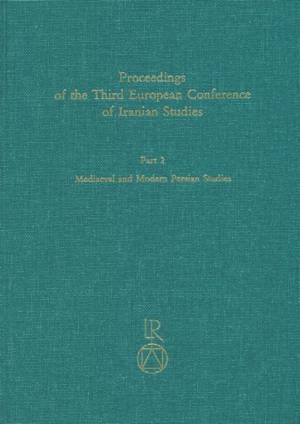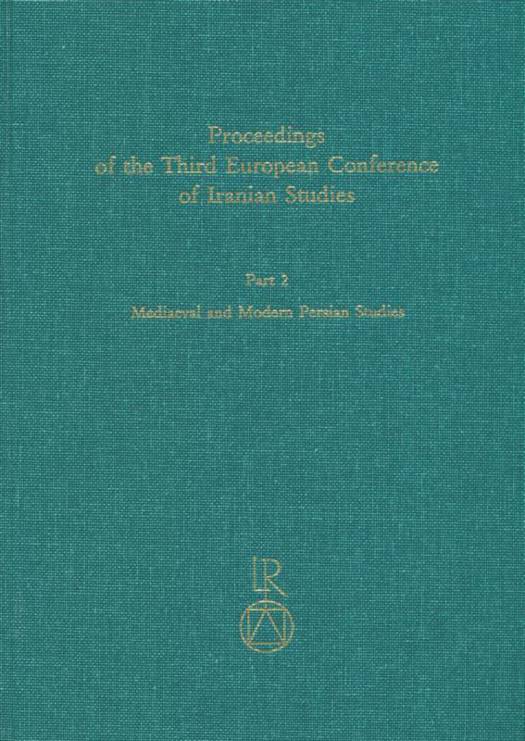
- Afhalen na 1 uur in een winkel met voorraad
- Gratis thuislevering in België vanaf € 30
- Ruim aanbod met 7 miljoen producten
- Afhalen na 1 uur in een winkel met voorraad
- Gratis thuislevering in België vanaf € 30
- Ruim aanbod met 7 miljoen producten
Zoeken
Proceedings of the Third European Conference of Iranian Studies
Held in Cambridge, 11th to 15th September 1999. Mediaeval and Modern Persian
€ 164,45
+ 328 punten
Omschrijving
Part two of the Proceedings of the Third European Conference of Iranian Studies contains 34 papers in English, French and German, arranged thematically in five sections. The first, Linguistic studies, ranges from the New Persian names in the Shahnama to the use of the particle in modern Tajik. Nine papers grouped under the heading Literary studies deal not only with classical Persian poetry, but also with modern prose literature and the oral traditions of the Bakhtiyari and of Baluchistan and Badakhshan. A similar chronological and topical spread is found in the section on Religion and religious literature, with investigations of mediaeval and modern biographical works, a study of documents connected with the Passion of Husayn, and papers on sufi literature. The section on history covers a range of topics from the Mongol period to the 1950s and events in Central Asia and Afghanistan as well as Iran. Finally, four attractively illustrated articles on Ottoman and Persian miniatures, painting in Central Asia, Kubachi-ware and the decorations on the Haydariyya mosque in Qazvin round off a varied and stumulating set of contributions, which highlight the richness and diversity of Persian culture in the mediaeval and modern period. The volume also testifies to the vigour of Persian studies in Europe, which the Societas Iranologica Europaea has assisted to promote through its four-yearly conferences. There is something in this volume to attract all students of Persian civilisation.
Specificaties
Betrokkenen
- Uitgeverij:
Inhoud
- Aantal bladzijden:
- 448
- Taal:
- Engels
- Reeks:
- Reeksnummer:
- nr. 17
Eigenschappen
- Productcode (EAN):
- 9783895001048
- Verschijningsdatum:
- 23/08/1999
- Uitvoering:
- Hardcover
- Formaat:
- Genaaid
- Afmetingen:
- 170 mm x 240 mm
- Gewicht:
- 1201 g

Alleen bij Standaard Boekhandel
+ 328 punten op je klantenkaart van Standaard Boekhandel
Beoordelingen
We publiceren alleen reviews die voldoen aan de voorwaarden voor reviews. Bekijk onze voorwaarden voor reviews.







